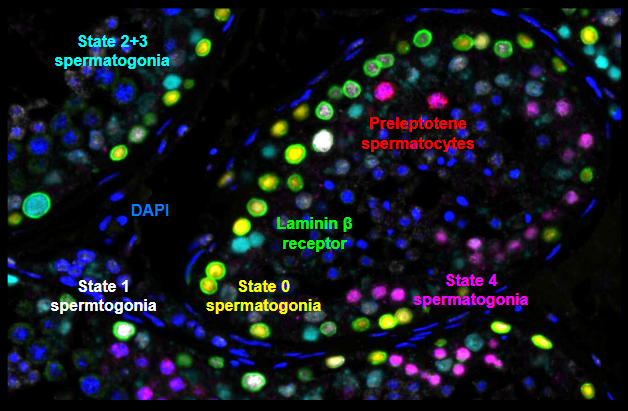Illustration (click to hide):

Spermatogenesis involves the transformation of adult spermatogonial stem cells into fully developed sperm cells, which is governed by the testis niche/microenvironment. The cells must maintain a balance between renewing themselves and becoming differentiated, and then proceed through multiple stages of cellular processes that include mitosis, meiosis, and sperm development, which are accompanied by significant morphological changes in both the shape and size of the cell.
This project aims to create a detailed spatial expression map of proteins involved in spermatogenesis using a multiplex immunohistochemistry approach. In FPPE tissue samples from human testis, specific cellular states along the sperm cell differentiation trajectory are marked out by fluorescent labeling. To be able to quantify and determine the state-specific expression patterns of hundreds of proteins, we will apply an image analysis pipeline to describe which proteins are expressed at which specific stage of spermatogenesis. The image example marks four states of spermatogonia differentiation, and one marker is used to label early spermatocytes. The Laminin beta receptor is mainly expressed during the earliest stages of differentiation of spermatogenesis.
This research has the potential to improve our understanding of the molecular mechanisms that control spermatogenesis, which could lead to the development of new therapies for infertility and other related disorders.
Project Information
-
BIIF Principal Investigators
- Gisele Miranda
External Authors
Feria Hikmet Noraddin, Cecilia Lindskog Bergström -
Date
2023-03-15 🠚 2024-11-30 - GitHub page